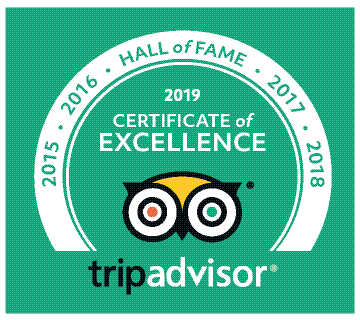A private twelve days tour to discover Thailand : nature, outdoors activities, temples, culture and more. Discover extraordinary sites in Chiang Mai, Chiang Rai, Sukhothai and Ayutthaya. Explore the beautiful and unspoiled province of Kanchanaburi and end up in Bangkok, a city where modernity and tradition coexist in a unique way. An unforgetable experience !
Route
Jour 1
Chiang Mai
Spirituality and relaxation
Meals 
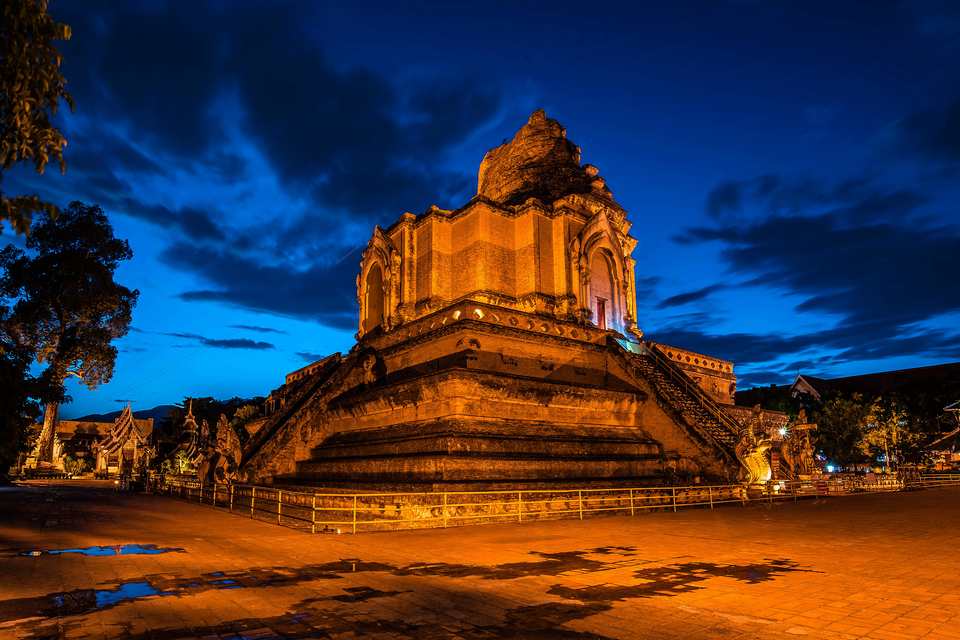
Departure from your hotel in Chiang Mai at 8 am.
A winding road crosses the mountain to reach Wat Phrathat Doi Suthep (วัดพระธาตุธาตสุเทพเทพ), the most famous temple of Chiang Mai. It is often referred to as Doi Suthep although Suthep is actually the name of the mountain on which it is located, meaning mountain in local Thai.

Climb the 306 steps to the temples. You can also take the funicular that leads to the temple at 1,100 m above sea level.
San Khampaeng is a small village where people derive their income from agriculture and make many handicrafts. They are famous for weaving silk and cotton, making silver jewelry, lacquered objects, carving wood, umbrellas...

Hot springs from San Kamphaeng (น้ำพุ ร้อน สันกำแพง) deliver water at 105 ° C, an ideal temperature for cooking an egg.
Several pools are built in the busiest part, you can sit and soak your feet. The water temperature is 40 to 50 ° C depending on the location. Behind these basins, a pool allows children to bathe entirely. Further, we can see two geysers whose access is prohibited to the public.

The thermal springs of San Kamphaeng: 105 ° C is ideal for cooking an egg. You can buy small baskets with three or more eggs on the spot and cook them for cooking, boiled or hard, a packet of soy sauce is provided with the eggs. There are special basins equipped with small hooks to hang your baskets.

Return to your hotel at Chiang Mai.
Originally built between 1495 and 1515, Wat Si Suphan (วัดศรีสุพรรณ) has been destroyed and rebuilt over the centuries. Bounds show the original building. The temple is located in the goldsmith district of Chiang Mai. The ubosot is covered with silver plates, inside and outside.

Wat Chedi Luang is beautiful in the morning sun. The temple houses several relics of highly respected monks, this temple was built in the early fifteenth century. It was damaged by the great earthquake in the sixteenth century. The remains, the lower two-thirds, are 60 m high and 44 m wide. The temple is very impressive!

Walk in the night market, 2 hours of free time.
Dinner
Night in a typical Thai hotel.
The Kampaeng Ngam Hotel and equipment of an outdoor pool and a restaurant with room service. Wi-Fi is free.

Jour 2
Chiang Mai, Chiang Dao
The Chiang Dao caves
Meals 
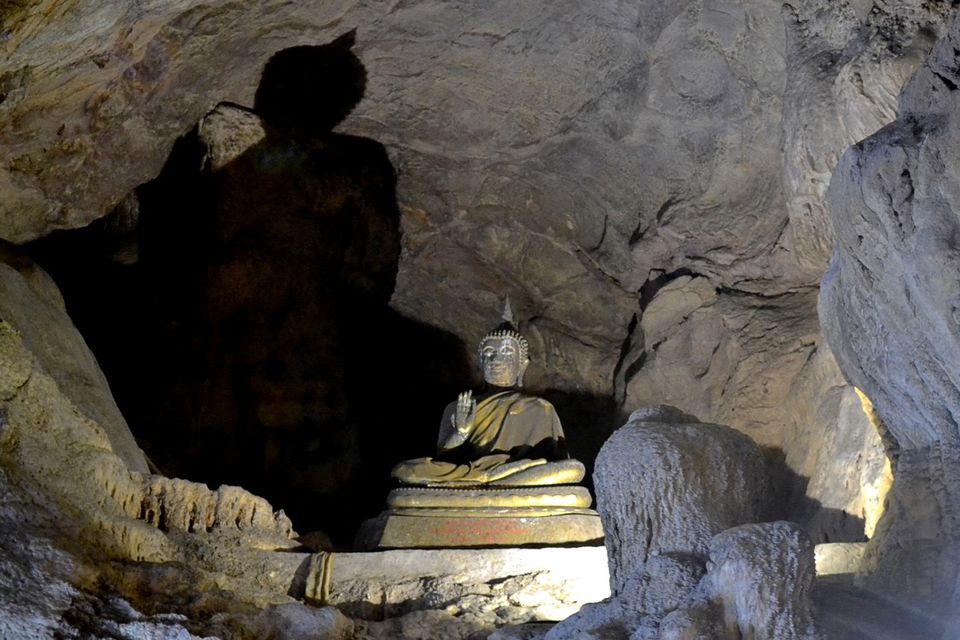
Breakfast.
Departure from your hotel in Chiang Mai at 8 am.
On the way to Chiang Dao.
Visit The Elephant Training Center Chiangdao
Lunch.
A covered staircase leads to the Chiang Dao Caves Complex, which consists of more than one hundred caves that stretch for ten to twelve kilometers.
The caves have served as a bivouac for Burmese troops before the attack on Chiang Mai in the mid-1400s.
Inside the cave you can let your imagination play to interpret the shape of stalagmites and stalactites.

Small trek in the jungle to visit a hidden waterfall.
Dinner
Extra charge of THB 800 per person at the hotel ''Buraphat Resort'' in Chiangdao. 3 stars hotel with A/C, wifi and hot shower

Jour 3
Chiang Mai, Thaton, Mai Sai
Near the Burma's border.
Meals 
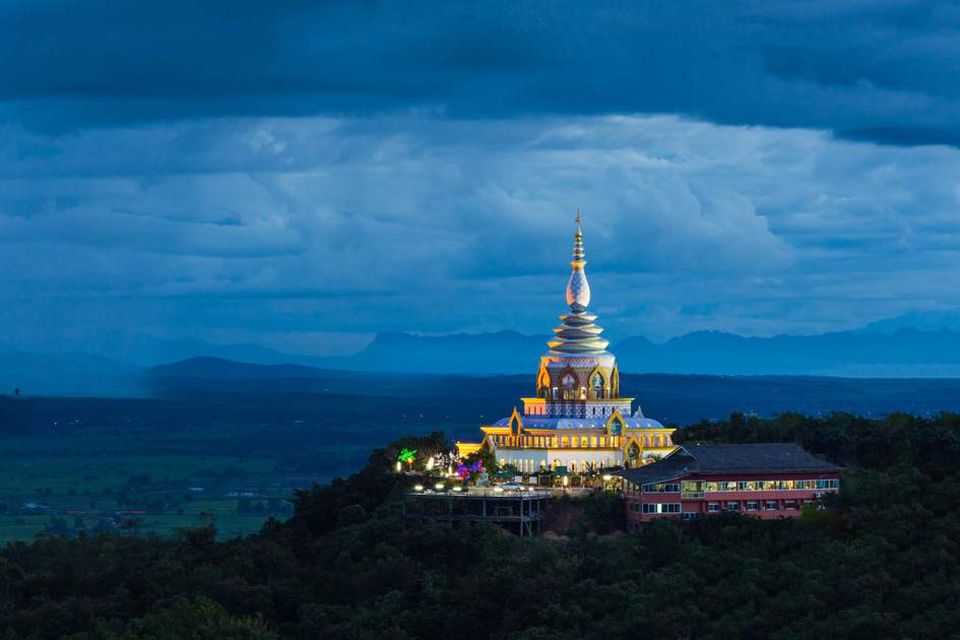
Breakfast.
Departure.
Road to Thaton
Visit Wat Tha Ton, known also as Phra Aram Luang, located at the top of the mountain, beautiful view of the Kok River.
Dinner in a local restaurant.
In this royal villa, the Mother Princess has spent a lot of time improving the life of local tribes and promotes abandoning the opium culture.

Discovery of a beautiful log palace with a wonderful flower garden.
Thais, Chinese and Burmese cross the border to Mae Sai to trade and work.

Dinner
Bansaeo Garden and Resort is located along the Mekong River and 5 km from the Golden Triangle. A/C and Wi-Fi.

Jour 4
Chiang Mai, Chiang Rai, Laos
The golden triangle...
Meals 
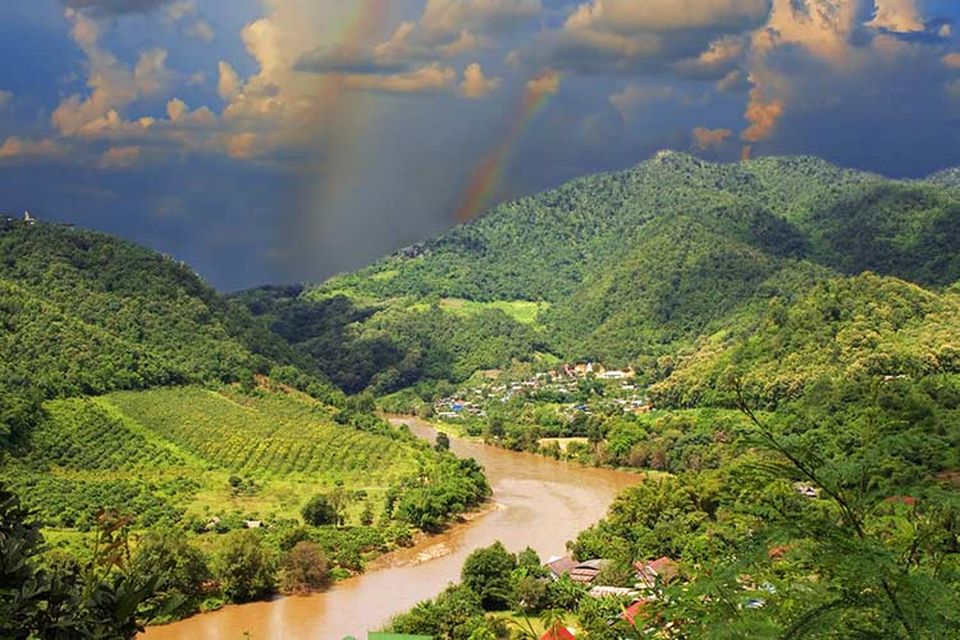
Breakfast.
The Golden Triangle is a famous opium production area. It is a mountainous region on the Laos, Burma and Thailand borders. The triangular border on the three countries lies at the confluence of the Mekong and its affluent, the Ruak in the agglomeration of Sop Ruak.

Boat ride on the Mae Khong River.
Brief visit to Laos. A visa is not necessary.
Visit of Chiang Rai Province.
Lunch in a typical restaurant.
Typical of Thai kitsh, Wat Rong Khun is immaculate white. It is encrusted with fragments of mirrors. The temple symbolizes the purity of Buddhism. Its construction began in 1997 under the leadership of a contemporary local Thai artist, Chalermchai Kositpipat. Inside murals mingle traditional Buddhist symbols, animals and elements of pop culture: Batman, Matrix, Spiderman... At the foot of the bridge that leads to the main building, a basin filled with hands of the ground and skulls seeming to escape from hell. Porticoes decorated with a death's head evoke the misdeeds of cigarettes and alcohol.

Wat Sang Kaew Photiyan is located at Mon Sang Kaew mountain, Mae Suai district, Tambon Chedi Luang. It’s about 50 kms south of Chiang Rai. The monk Kruba Ariya Chart initiated the construction of the temple on May 9, 2006 (2550 B.E.). Sang Kaew Phothiyan is translated as, A lotus that sprout and emerged from the water and emits light like a sparkling gem with brilliant light .

Return to your hotel at Chiang Mai.
Jour 5
Chiang Mai - Sukhothai
Meals 
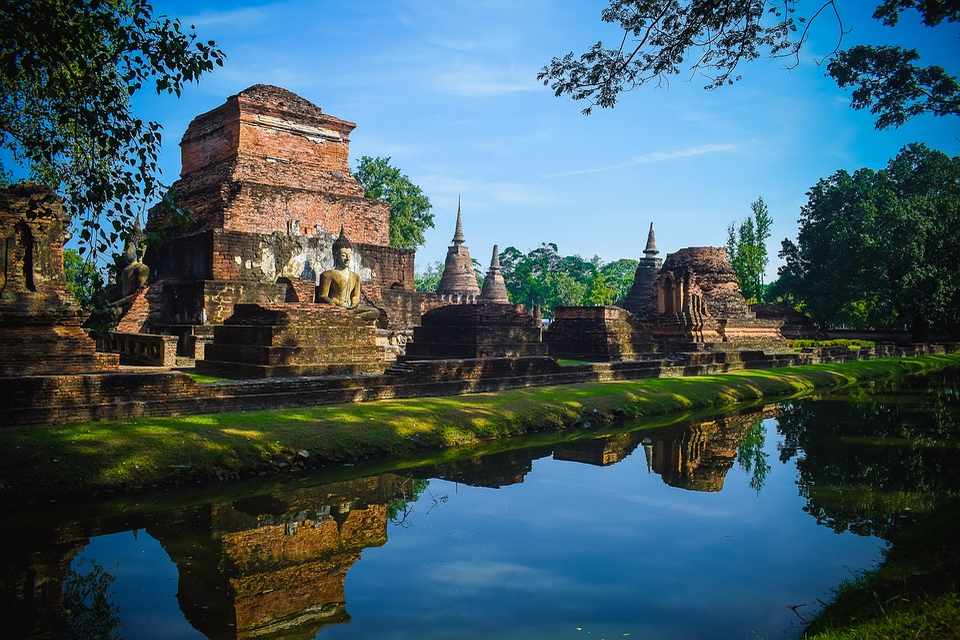
Departure from your hotel in Chiang Mai at 6am.
Breakfast.
On the way to Sukhothai. About 4 hours and 30 minutes drive.
Lunch in local restaurant.
Sukhothai (or Sukothai) is the first capital of Siam (Thailand) founded in 1238 and ending the Khmer kingdom of Angkor Wat. Sukhothai was listed in 1991 as World Heritage of Humanity. It is more famous for her art than for it political achievements. Located about 450 kilometers north of Bangkok, the huge city of Sukhothai is now in ruins. The wooden palace of his kings has disappeared. However, the city still has many remains of temples, built laterite and brick. Most of the buildings that have been discovered, and partly raised, are inside a rampart reinforced with moats. But many other buildings, scattered in the surrounding rice paddies, are waiting to be cleared of the earthen envelope that covers them. Much of the artifacts found in Sukhothai are found at the Bangkok National Museum.

Dinner in a local restaurant.
Relax in the Lotus village.
Night in the Lotus village, hotel with A/C and hot water.
Jour 6
Ayutthaya
Ayutthaya
Meals 
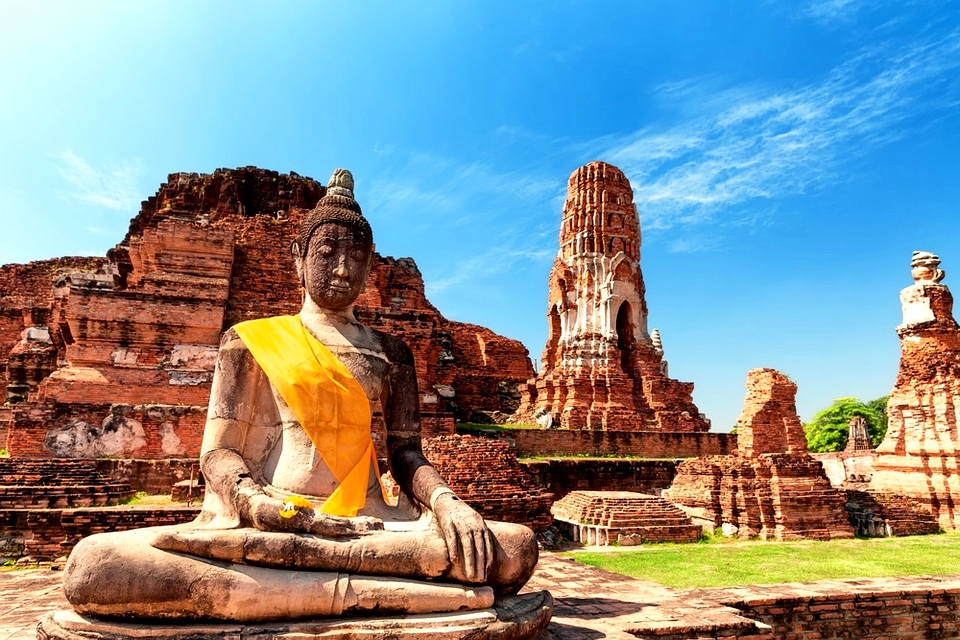
Breakfast.
On the way to Ayutthaya. About 4 hours and 30 minutes drive.
Boat ride.
Wat Phra Mahathat, located in the ancient city of Ayutthaya, is certainly the most visited monument of the ancient ruined capital. Wat Phra Mahathat is particularly known for a Buddha's head entangled in the roots of a large tree.

Lunch in local restaurant.
Wat Phanan Choeng is a Buddhist temple located in the city of Ayutthaya, in Thailand, on the east bank of the Chao Phraya River, on the southeastern side of the confluence of the Chao Phraya and Pa Sak Rivers. Today, the temple is a must-see attraction.

Phra Mongkhon Bophit is one of the largest bronze Buddha statue in Thailand with (approximately) 9.5 meters wide from one knee to another, and a height of 12.5 meters (without the pedestal). The image of Buddha sits in the lotus position.

Dinner in a local restaurant.
Relaxation at Ban Thai House.
Or equivalent.

Jour 7
Kanchanaburi
Ayutthaya - Kanchanaburi
Meals 
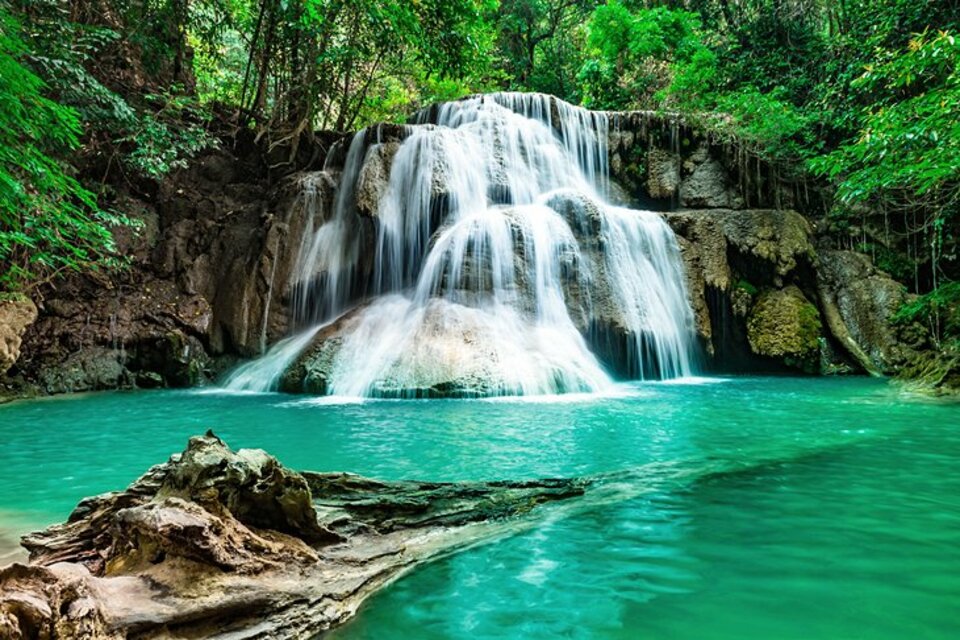
The Erawan Waterfall or Erawan Waterfall is located in Erawan National Park, Si Sawat District, Kanchanaburi Province, Thailand. The Erawan waterfall is one of the jewels of Thailand. His name is a reference to the mythological Elephant Erawan. One of its names means 'one who weaves or binds the clouds', because the myth says that these elephants are capable of producing clouds.

Lunch in local restaurant.
Option 'Funny buggy' or Mountain bike, on demand.
Hellfire Pass is a section of the famous Death Railway where the Japanese prisoners cut a long and deep trench into a huge rock mass to allow the passage of the railway. This passage dug in the rock extends on 500 meters, on a height of 26 meters. This place was named Hellfire Pass by the prisoners, because at night, the lighting was provided by torches, which gave it an infernal and ghostly appearance. The Hellfire Pass museum displays photos, maps, models, and illustrations from the time. Information is provided about the railway and what happened in this area. The museum has a small screening room, where a short video shows some stages of the construction and where we can also hear the dialogues of several Australian prisoners of war.

Relaxation and swimming in the Saiyok Yai national park.
Optional thai massage. On demand.
The restaurant is on a floating raft on the Kwai Noi River. It is surrounded by waterfalls on one side: Sai Yok Lek, on the other: Sai Yok Yai.

What makes the charm of these floating pavilions, equipped with western bedding and fan, is that they are at the foot of the waterfall Khao Chon (Sai Yok Yai). An authentic and unforgettable experience that worth all the air conditioning and swimming pools of the world!

Or optional A/C and hot shower room (outside the national park).
Jour 8
Thong Pha Phum, Sangkhlaburi
Thong Pha Phum, Sangkhlaburi and the Môn bridge
Meals 
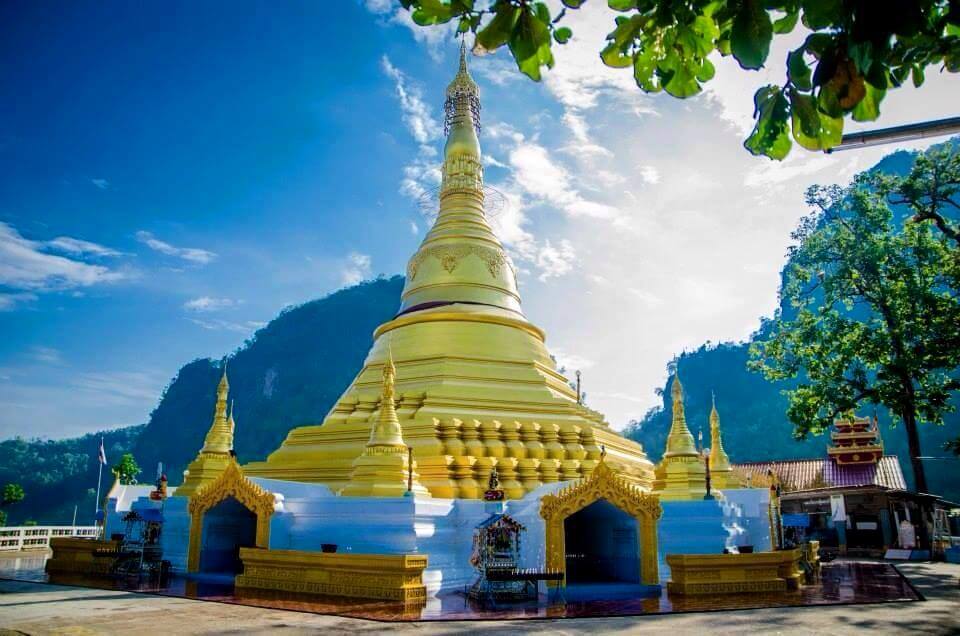
Breakfast.
The local market of Thong Pha Phum allows you to enjoy all the colors, the smiles of Thailand and to discover all the particularity of the typical Thai cooking and also, in this area close to the border which counts many refugees, all the flavors of Burmese cuisine.

Wat Tha Khanun belongs to Maha Nikaya Buddhism , one of the two main branches of Thai Buddhism. It is the largest Theravada order in Thailand. This temple occupies a space of about fifteen hectares in the district of Thong Pha Phum.

Beautiful sceneries on the way to Sangklaburi, all along the lake.
Coffee break at Kroeng Krawia waterfalls.
Lunch at the Three Pagodas Pass.
The three pagodas pass and the local market discovery.
Walk on the wooden môn bridge.
Longtail boat on Khao Laem lake to discover the engulfed temple.
Lake Khao Laem, the reservoir lake of the Vachiralonkorn Dam, is surrounded by mountains in the Tenasserim range. Depending on its level we can see remains of the past as the immersed temple.

Hotel : P. Guesthouse
Hot water - A/C

Jour 9
Kanchanaburi
Elephants, history and kayaking
Meals 
Breakfast.
Activities with elephants at 'Elephant Haven' sanctuary in the greatest respect for the animal.
First approach and possibility to feeding elephants.
Bathing and water games with elephants in the Kwai Noi River.
A small market below Tham Krasae station offers local handicrafts.

Lunch.
The laterite sanctuary is at the center of a much larger city, and all the ruins form a microcosm representative of the universe. The city limits are surrounded by a rampart with a laterite wall, measuring approximately 800 x 1400 meters.

A quiet going down the water, along temples and lush gardens, ending under the famous Kwai River Bridge.

Optional long-tail boat trip.
Visit of the Kwai River Bridge and its small market.
Dinner in a typical restaurant.
Hotel : Tree Tara Resort

Jour 10
Kanchanaburi
Elephants, history and kayaking
Meals 
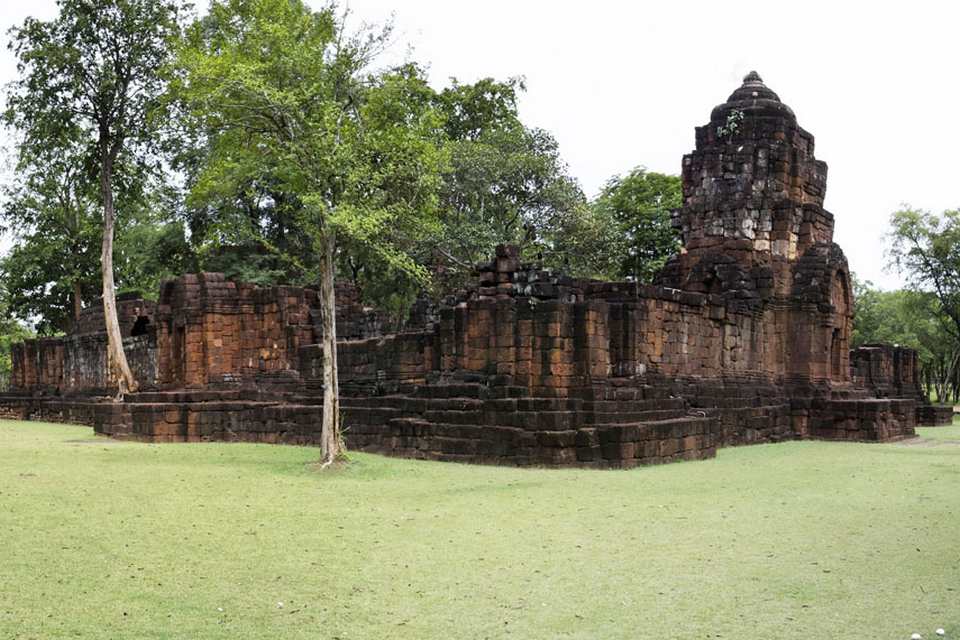
Breakfast.
Activities with elephants at 'Elephant Haven' sanctuary in the greatest respect for the animal.
First approach and possibility to feeding elephants.
Bathing and water games with elephants in the Kwai Noi River.
A small market below Tham Krasae station offers local handicrafts.

Lunch.
The laterite sanctuary is at the center of a much larger city, and all the ruins form a microcosm representative of the universe. The city limits are surrounded by a rampart with a laterite wall, measuring approximately 800 x 1400 meters.

A quiet going down the water, along temples and lush gardens, ending under the famous Kwai River Bridge.

Optional long-tail boat trip.
Visit of the Kwai River Bridge and its small market.
Jour 11
Bangkok
Bangkok temples and monuments
Meals 
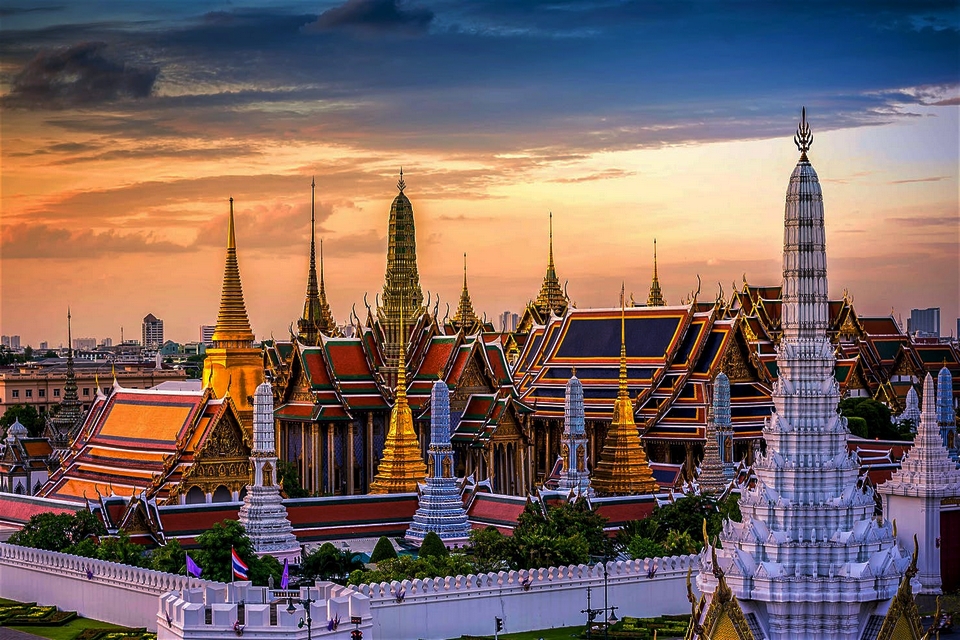
Departure from your hotel in Kanchanaburi city at 7 o'clock.
The departure of the train is scheduled at 15 h 58 min from Krasae station. The train is often late. This allows the visit of Krasae Cave and the Wang Pho Viaduct.

The temple of Wat Traimit is famous for its golden Buddha, which dates from the Sukhothai period, the largest statue of the world in this precious metal. It weighs not less than 5.5 tons. It is the largest gold statue in the world. It is worked in the style of Sukhothai (1238-1370) but could have been manufactured later. The Buddha is represented in the traditional posture of Bhumisparshamudra (taken the earth to witness, the right hand to the ground). The classic Sukhothai style statues are seated on an ordinary base. The flame that surmounts the protuberance of the skull or ushnisha is an innovation of Sukhothai that symbolizes the radiance of its spiritual energy.

One of the largest and oldest Buddhist temples in Bangkok. Covering an area of eight hectares, it is located east of Chao Phraya, immediately south of the Royal Palace (Bangkok) in Phra Nakhon district. It contains a large reclining Buddha, to which it ownes its official name, {{Wat Phra Chettuphon Wimon Mangkhalaram Ratchaworamahawihan}}. This statue represents Buddha on his deathbed, about to enter parinirvana. It is 43 meters long and 15 meters high. His feet are inlaid with mother-of-pearl representing the 108 Buddha states.

Lunch in local restaurant.
The former Royal Palace of Bangkok (Thai: พระบรม มหาราช วัง, {{Phra Borom Maha Ratcha Wang}}) of Bangkok was built in 1782 by King Rama the first, the founder of the Cariouati Dynasty, on the right bank (eastern ) of Chao Phraya when he moved the capital of Thonburi to Bangkok. Throughout successive reigns, many new buildings and structures were added, especially during the reign of King Chulalongkorn (Rama V). The palace houses not only the royal residence and the throne room, but also a large number of government offices and the newly renovated Emerald Buddha Temple ({{Wat Phra Kaeo}}. The current monarch, King Vajiralongkorn (Rama X), currently resides in Chitralada Palace, but the Grand Palace is still used for official events. Several royal ceremonies take place in the palace walls each year.

Wat Phra Kaeo (Thai : วัด พระ ศรีรัตนศาสดาราม), or Temple of the Emerald Buddha, is a Buddhist temple located in the historic heart of Bangkok, one of the most important sacred places in Thailand. Wat Phra Kaeo refers not only to the temple containing the Emerald Buddha, called ubosot, but also to all the buildings within the sacred architectural complex. The Emerald Buddha, located in the ubosot, is a tall 76,2 centimeter statue carved from a single block of jade in the fifteenth century.

This temple was built in 1899 at the initiative of King Rama V on the site of an ancient sanctuary. The king decided this construction to compensate for the destruction of two old temples necessitated by the extension of the Royal Palace Dusit. The main building (bot) is built on a cruciform plan and uses a white marble of Carrara which explains its tourist name of Marble Temple. The main statue of the bot is a life-size replica of the famous Phra Buddha Chinaraj whose original is revered in Phitsanulok. Inside the base of the statue are the ashes of King Rama V. The temple also has magnificent gardens and a cloister whose galleries house a collection of 53 remarkable statues of Buddha.

Surrounded by cultural and leisure centers, Rambuttri Village Plaza is located in Bangkok's historic Rattanakosin District, at 5 minutes walk from Khaosan Road. It has 2 rooftop pools.

Surrounded by cultural and leisure centers, Rambuttri Village Plaza is located in Bangkok’s historic Rattanakosin District, at 5 minutes walk from Khaosan Road. It has 2 rooftop pools.

Jour 12
Bangkok
Bangkok canals and other visits
Meals 
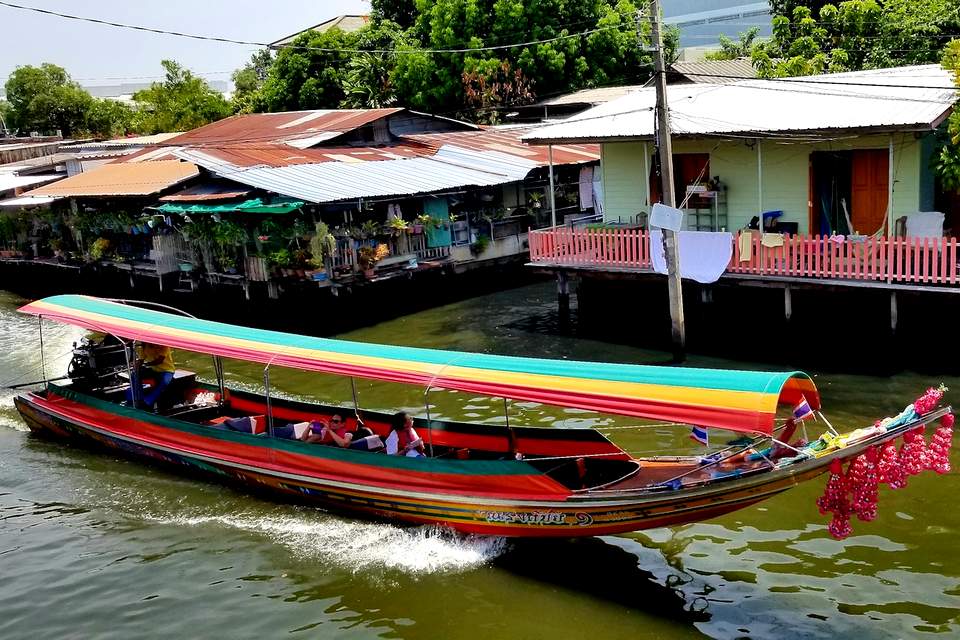
Breakfast.
The excursion offers an authentic view of the lifestyle of local residents, such as houses on stilts and children playing in the water.

Lunch.
After his trip to Europe in 1897, King Rama V bought the orchards and fields between the Padung Krungkasem Canal and the Samsan Canal to build the royal garden called the Dusit Garden. King Rama V ordered to build the first permanent residence in 1900. He had the residence Munthatu Rattanaroj in Chuthathui Rachathan on the island of Sri Chang (Chonburi province) but after he dismantled it and rebuilt it in the garden Dusit under the supervision of Prince Narissara Nuwaddhiwongse. The inauguration ceremony of the Vimanmek residence took place on March 27, 1901. King Rama V moved from the Grand Palace to the Vimanmek residence 5 years after the completion of the Amporn Satarn villa in 1906 where he lived until his death in 1910. The Vimanmek residence was closed and the royal family returned to the Grand Palais.

The temple is a center of the Thammayut Nikaya order of Thai Theravada Buddhism, it is the shrine-hall of Phra Phuttha Chinnasi (พระพุทธชินสีห์), a statue of the Buddha which dates to around 1357. Bowonniwet has been a major temple of patronage for the ruling Chakri dynasty. It is where many royal princes and kings studied and served their monkhood, including King Bhumibol and his son, the present King Vajiralongkorn.

Safarine ensures the transfer to the city of your choice in Thailand, either at the end of the tour or the day of your choice. Safarine offers a wide choice of direct or staged transfers. For any information do not hesitate to contact us.

Prices and terms
Per person Nous consulter
Special prices for children under 1,20 m
Nous consulter
For more than 4 persons Nous consulter
Options
Options are only possible upon reservation and subject to availability.
![]()
French interpreter translator. 2 500 THB per day
Transfer Bangkok - Kanchanaburi-city :
3 200
THB. One way.
Round trip 6 000 THB. Airport supp. 300 THB.
Transfer to other destinations : On demand.
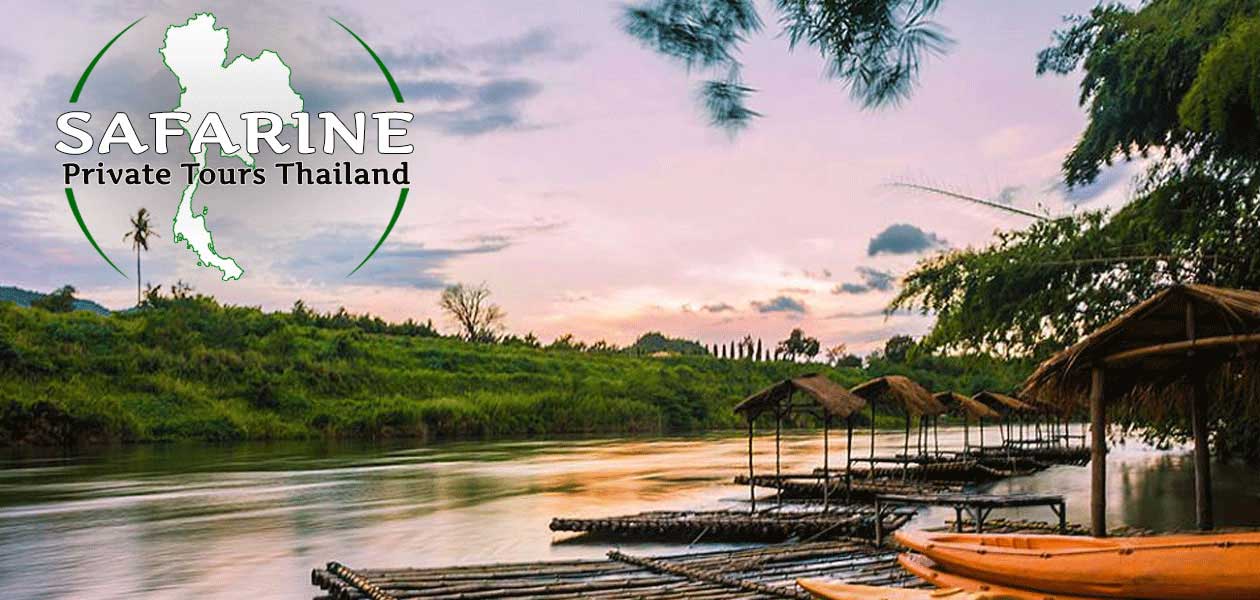




















 CM-KAN-BKK-12
CM-KAN-BKK-12



